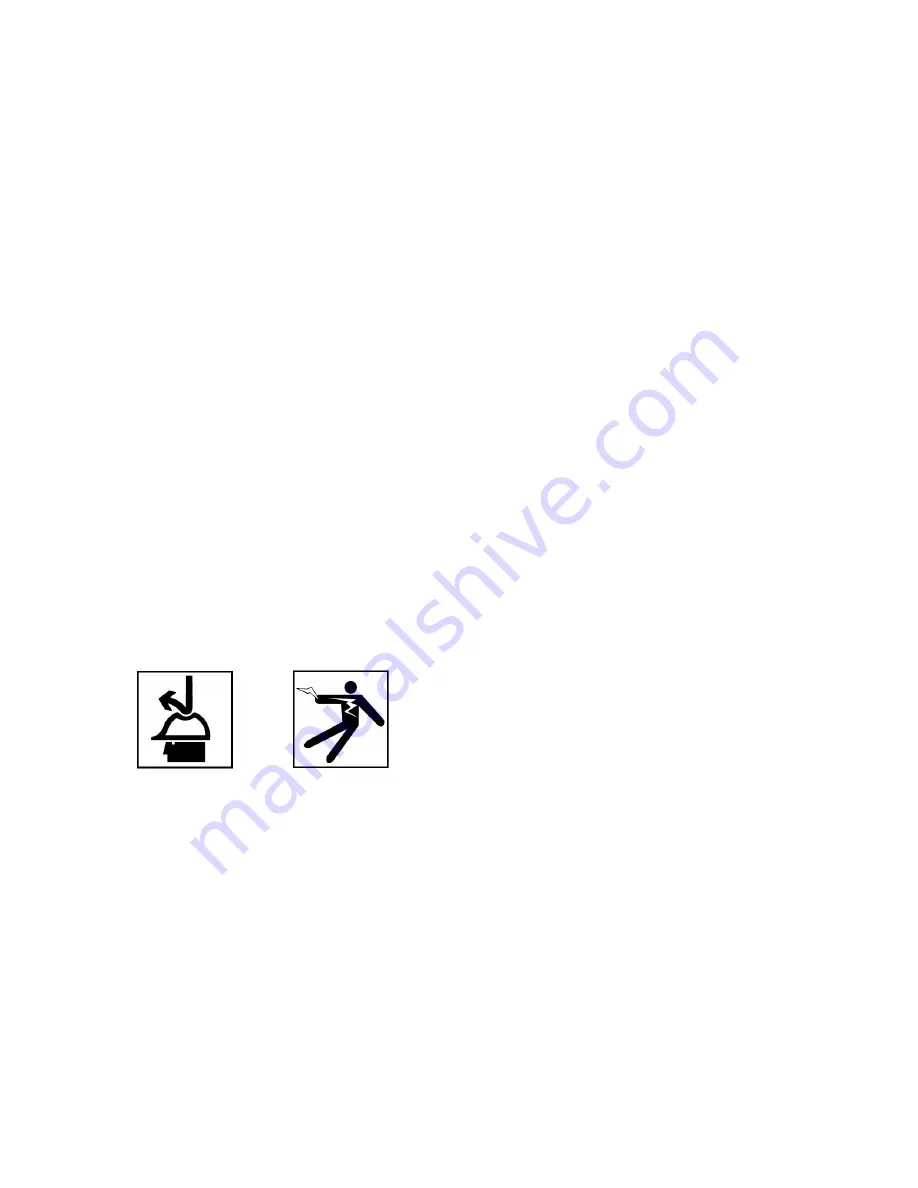
5
• Broken, worn, missing, mis-aligned or binding parts. Make sure that the motor assembly
moves smoothly and freely up and down the posts of the base assembly. Confirm that the
chain and swivel handle move freely.
• Any other condition which may prevent safe and normal operation. If any problems are
found, do not use the hole cutting tool until the problems have been repaired.
4 Inspect the arbor, hole saw and drills to be used with the Hole Cutting Tool for wear,
deformation, breakage or other issues. Do not use dull or damaged cutting tools. Dull or
damaged cutting tools increase the amount of force required, produce poor quality cuts and
increase the risk of injury.
5. With dry hands, plug the cord in. Test the GFCI in the electrical cord to insure that it is
operating correctly.
When the test button is pushed in, the reset button should pop out. Reactivate by pushing the
reset button. If the GFCI is not functioning properly, unplug the cord and do not use the hole
cutting tool until the GFCI has been repaired.
6. With the Hole Cutting Tool on a stable surface check the Hole Cutting Tool for proper
operation. Keep clear of the chuck. Move the ON/OFF switch to the ON position. The motor
should start and the chuck turn counter clockwise viewed from the chuck end. Inspect the tool
for misalignment, binding, odd noises or other unusual conditions. Move the ON/OFF switch
to the OFF position. If any issues are found, do not use the tool until it has been repaired.
7. After the inspection is complete, with dry hands unplug the tool.
Machine And Work Area Set-Up
Warning: objects falling and electrical shock
Set up the Hole Cutting Tool and work area according to these procedures to reduce
the risk of injury from electrical shock, entanglement, crushing and other causes and
prevent tool damage.
Properly secure the Hole Cutting Tool to the pipe. Improperly secured Hole Cutting
Tools can slip and fall and cause striking and crushing injuries. Do not use for hot
tapping. When cutting into an existing system, the pipe must be drained and
depressurized prior to cutting. This reduces the risk of electrical shock and other
serious injuries. When working overhead, all personnel should wear hard hats and be
clear of the area below. This reduces the risk of serious injury should equipment or
other objects fall.
1. Check work area for:
• Adequate lighting.
• Flammable liquids, vapors or dust that may ignite. If present, do not work in area until
sources have been identified and corrected. The hole cutter is not explosion proof and can
cause sparks.



























